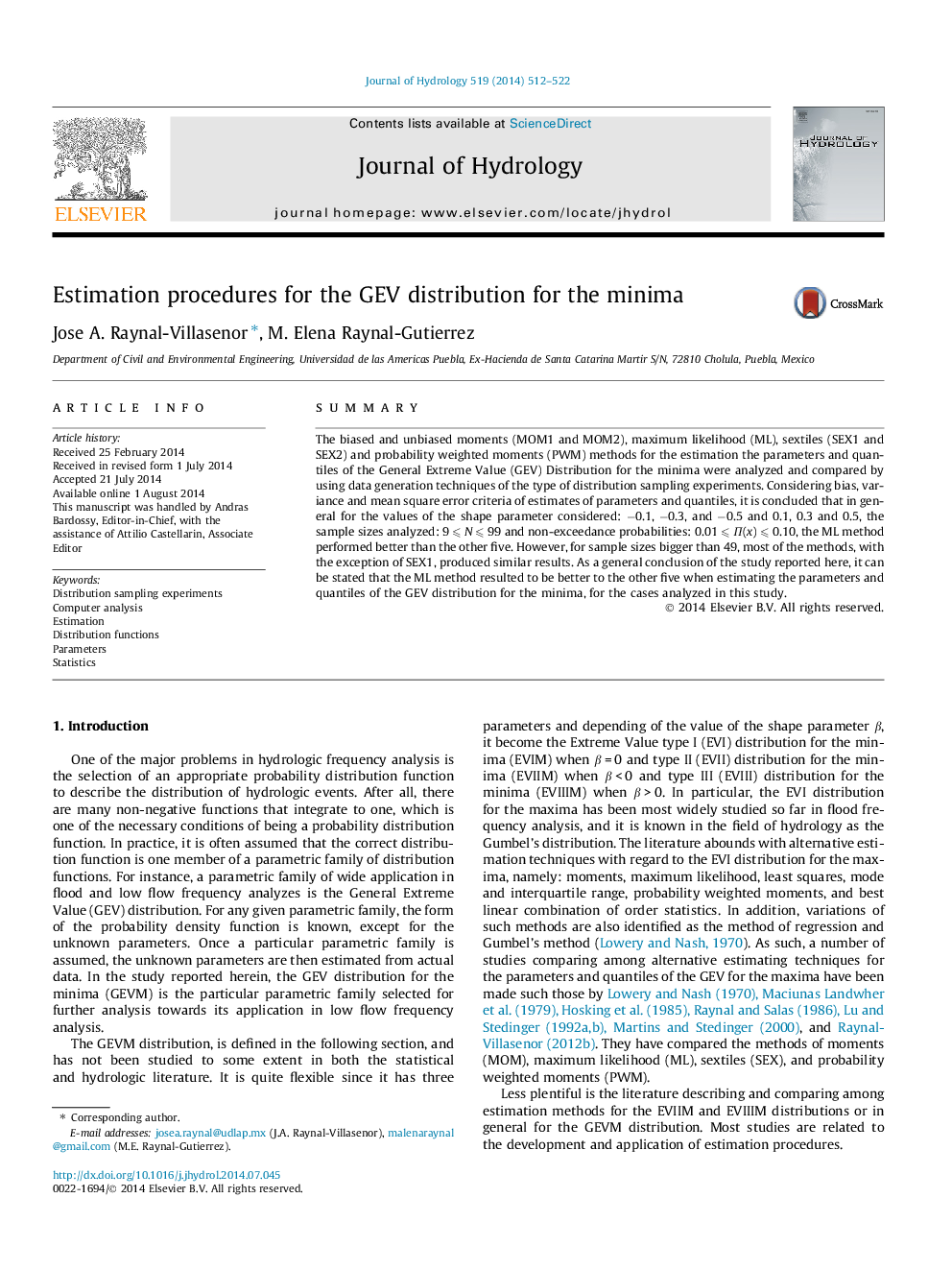| Article ID | Journal | Published Year | Pages | File Type |
|---|---|---|---|---|
| 6412427 | Journal of Hydrology | 2014 | 11 Pages |
â¢Distribution sampling experiments were done in the study for the GEV (minima).â¢The variance, mean squared error and bias were used to measure the performance.â¢We used biased and unbiased moments, maximum likelihood, sextile and probability weighted moments.â¢We used four different samples sizes and four different number of samples.â¢Maximum likelihood was the best overall method.
SummaryThe biased and unbiased moments (MOM1 and MOM2), maximum likelihood (ML), sextiles (SEX1 and SEX2) and probability weighted moments (PWM) methods for the estimation the parameters and quantiles of the General Extreme Value (GEV) Distribution for the minima were analyzed and compared by using data generation techniques of the type of distribution sampling experiments. Considering bias, variance and mean square error criteria of estimates of parameters and quantiles, it is concluded that in general for the values of the shape parameter considered: â0.1, â0.3, and â0.5 and 0.1, 0.3 and 0.5, the sample sizes analyzed: 9 ⩽ N ⩽ 99 and non-exceedance probabilities: 0.01 ⩽ Π(x) ⩽ 0.10, the ML method performed better than the other five. However, for sample sizes bigger than 49, most of the methods, with the exception of SEX1, produced similar results. As a general conclusion of the study reported here, it can be stated that the ML method resulted to be better to the other five when estimating the parameters and quantiles of the GEV distribution for the minima, for the cases analyzed in this study.
